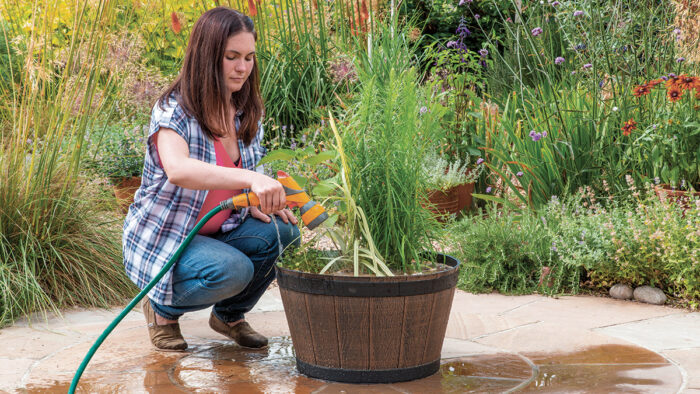
Besides impacting the volume of water needed, the types of plants you have and where they are sited will also determine which water delivery method is best. For example, the ideal way to water annuals in a container is different from the best approach for watering 400 square feet of lawn. Here’s a look at the most common watering methods and things to consider when using these options.
1. Choose hand watering for small areas and very targeted delivery
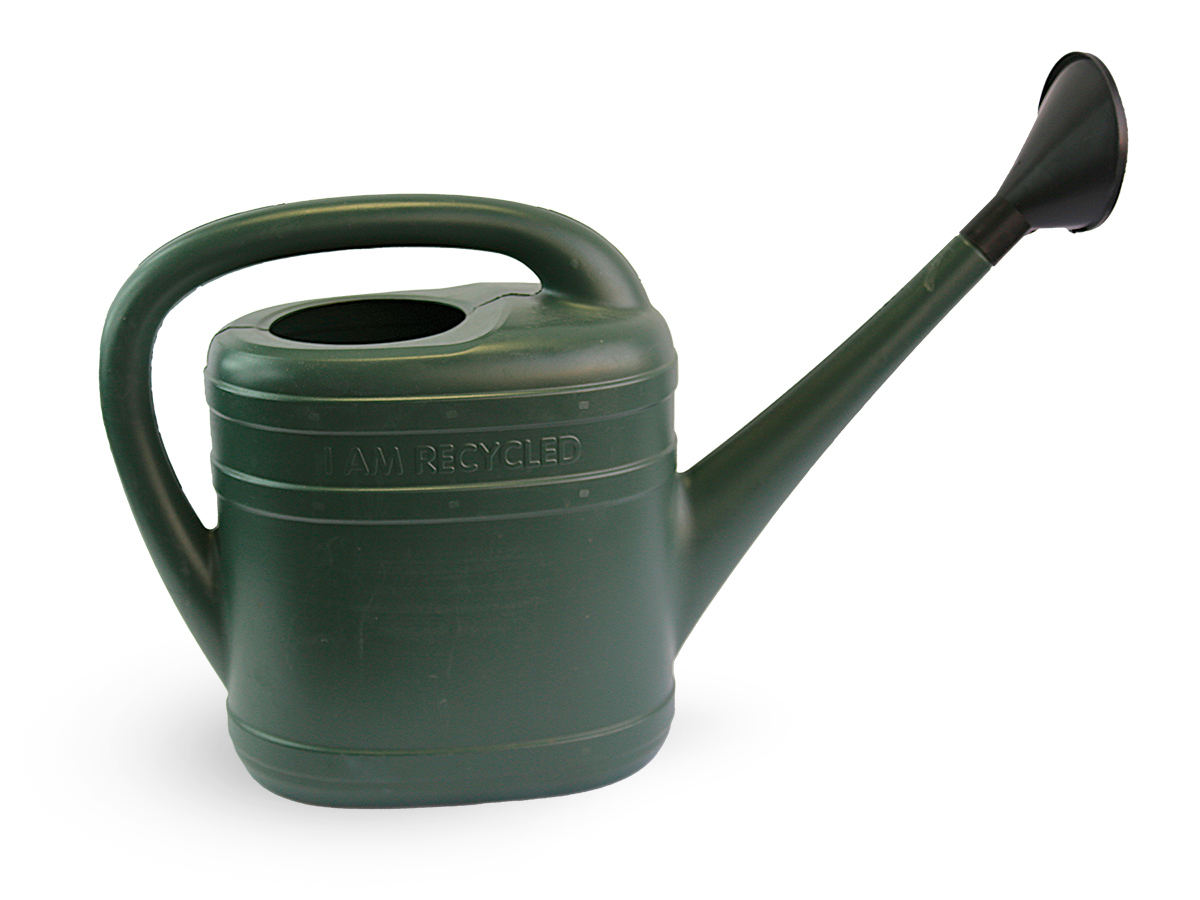
Watering by hand, while it can be time consuming, is one of the best ways to deliver water to smaller areas, specific plants, and containers. By controlling the rate of flow (i.e., watering slowly to let it soak in) and directly watering these targets, you can be sure that they are receiving adequate water. The nuances of hand-watering duration and technique may differ from user to user, but it’s important to minimize overflow, splash, and wasted water by applying an appropriate volume. Consider using a hose nozzle or watering wand attachment that gently applies the water, and always use a shut-off valve to minimize lost water as you move from target to target. All hoses and fittings should be repaired or replaced as needed—allow no leaks. If you want to use a watering can, choose one with a rose head (like the one pictured) that will diffuse the water similarly to a hose-end nozzle. Although hand watering may be viewed as a mundane task, appropriate focus and technique are vital.
2. Look to sprinklers to cover a lot of ground
Sprinklers and overhead irrigation systems can cover large amounts of square footage, which is their primary benefit. The timing of watering with these systems is also crucial, as the afternoon hours should be off-limits because of the loss of water due to overspray (winds) and evaporation during the warmest part of the day. These systems may only be 40% to 50% efficient due to the application challenges associated with delivering water from above the plants.
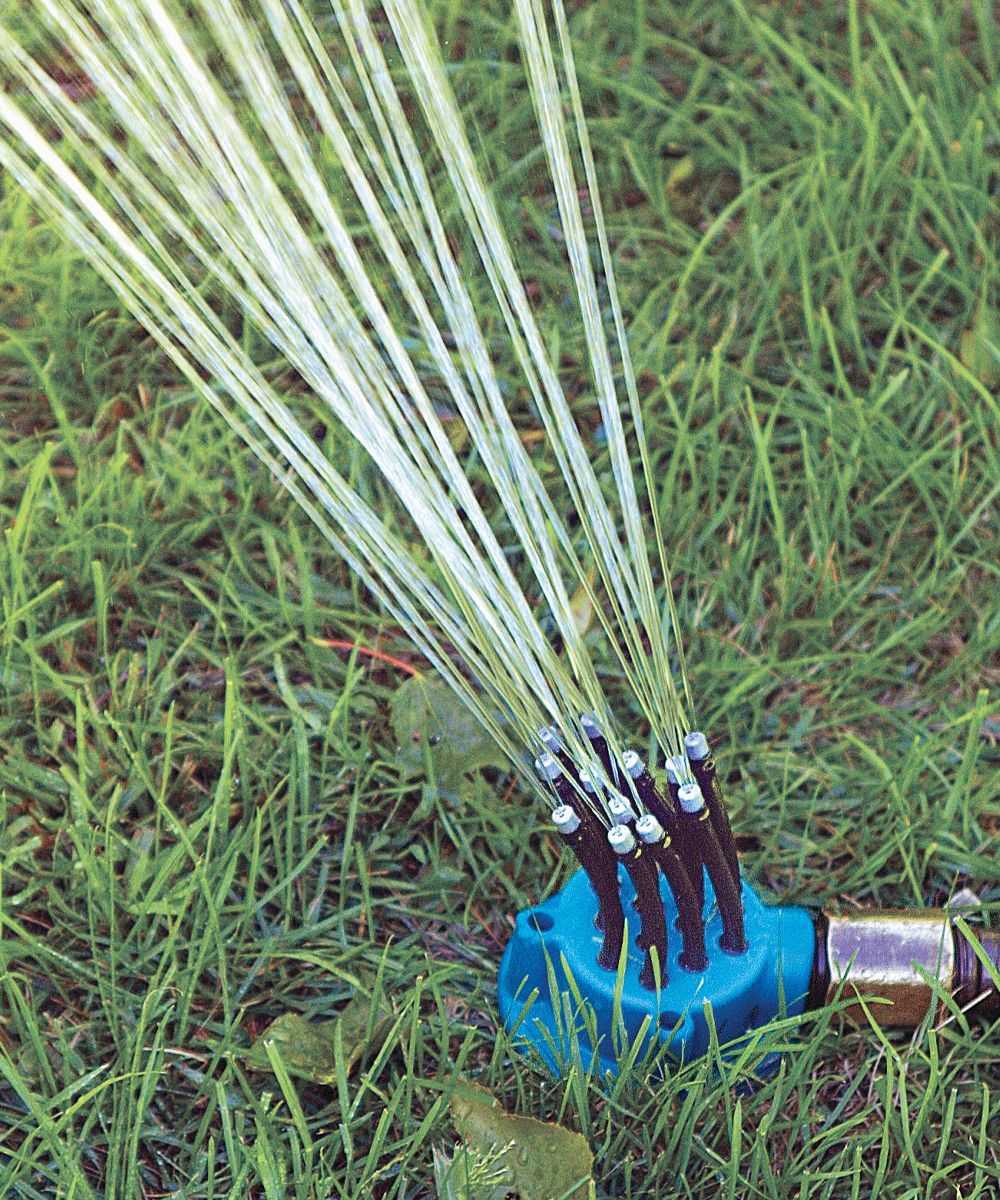
A wide range of sprinkler styles and associated application patterns can be utilized out in the garden. Sprinklers can then be moved around and used in target areas as needed. The challenge, as always, is to make sure there is minimal waste and that the location of your sprinkler and the duration of watering are appropriate for the target plantings. Adjustable sprinklers that allow you to delicately refine the pattern are ideal for water conservation. Consider simple timers for your hose-end sprinklers as well.
Automated irrigation systems with pop-up sprinklers/misters that provide a more permanent option (with underground piping—no hose dragging required) have become very advanced in the last decade. These systems, while allowing for a wide range of timing and durations over variable “hydro-zones,” now include elements that monitor weather and self-adjust scheduling based on the local forecast. Modern systems include automatic rain sensors that will help avoid overwatering and adjust the watering schedule accordingly. Other advanced systems include real-time reading from moisture sensors in the soil and can be adjusted for soil types, slope (gradient), and other variables. Speak with local professionals regarding the most efficient and appropriate irrigation system for your garden situation. Irrigation systems should be checked each year for leaks, cracked pipes, plugged heads, or other challenges. In larger areas, irrigation may also be wasting water that hits paved surfaces and runs off-site. Consider the use of permeable paving systems, or appropriately configure irrigation to minimize this overage and waste.
Keep in mind that as a garden grows, sprinklers and irrigation systems will need to be adjusted to accommodate larger plant material, new obstacles, or other garden changes that necessitate modifications to maintain efficiency and to not miss properly watering any target plants or areas.
D&X Garden Sprinkler
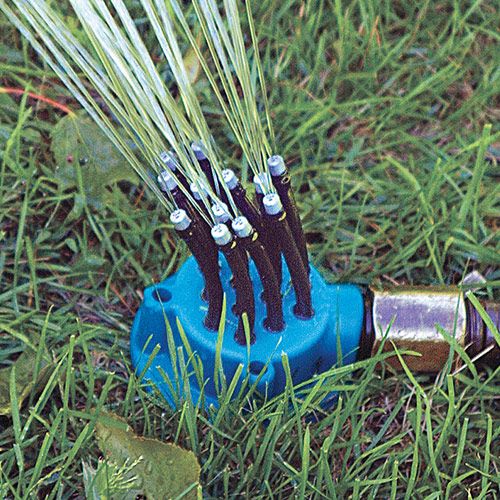
3. Employ drip irrigation and soaker hoses to water a lot of specific targets
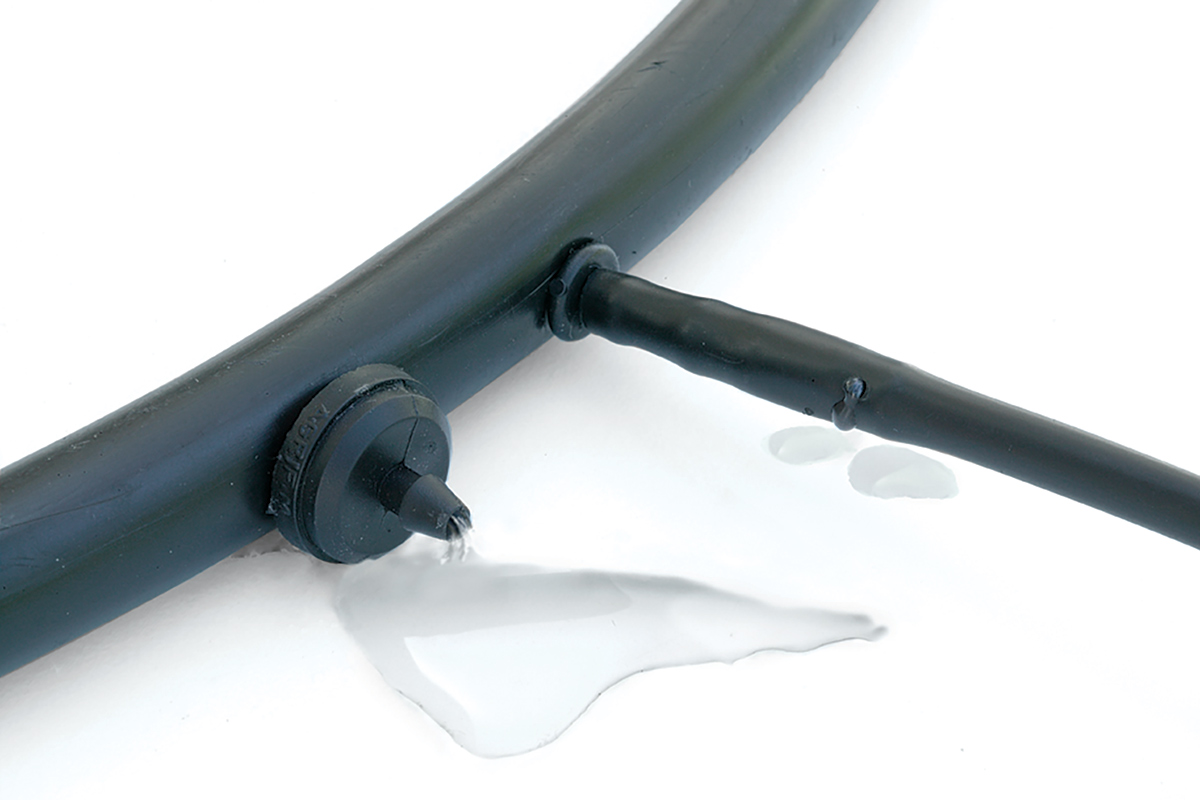
Drip irrigation systems, while initially fairly expensive for a large landscape, are an excellent way of delivering water directly to the root zone while avoiding wetting the foliage. When properly installed and maintained, drip irrigation systems can be up to 90% efficient by providing moisture to the appropriate root depth while minimizing evaporation and waste. These systems, utilizing emitters branched off of somewhat flexible piping or hoses, do need appropriate and timely observation, evaluation, and repair as needed. On occasion, nibbling from critters can cause damage that should be addressed promptly.
Soaker hoses are a good alternative to drip irrigation systems and can cut water use by up to 70% when working efficiently. Easy to connect to an outdoor water spigot, they are excellent for vegetable gardens and garden spaces that are fairly level. Most systems are efficient up to 200 feet of length from a water source. Soaker hoses can be susceptible to sun damage over the years and may be challenging to work around as well. They should be examined annually for damage and be assessed for uniform water distribution over their entire length.
RAINPOINT Sprinkler Timer with Brass Swivel

No matter which watering method is right for your situation, keep in mind that water is precious on our planet and vital in our gardens. By regularly evaluating our methods of watering and trying to find the most water-wise approach to our gardens, we can collectively play a part in conserving this important resource. Regardless of where we live and how we garden, we should all be making sure every drop counts.
Mark Dwyer is a residential landscape consultant and designer in Janesville, Wisconsin, with degrees in landscape architecture and urban forestry.






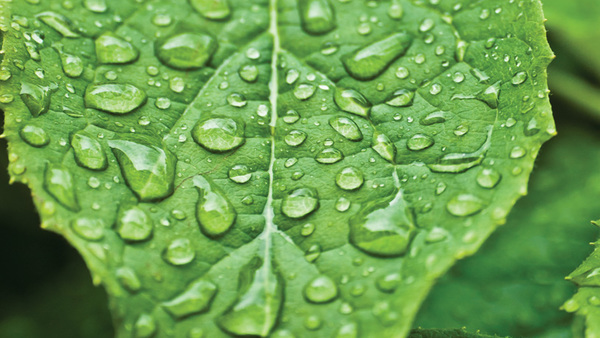













Comments
Log in or create an account to post a comment.
Sign up Log in